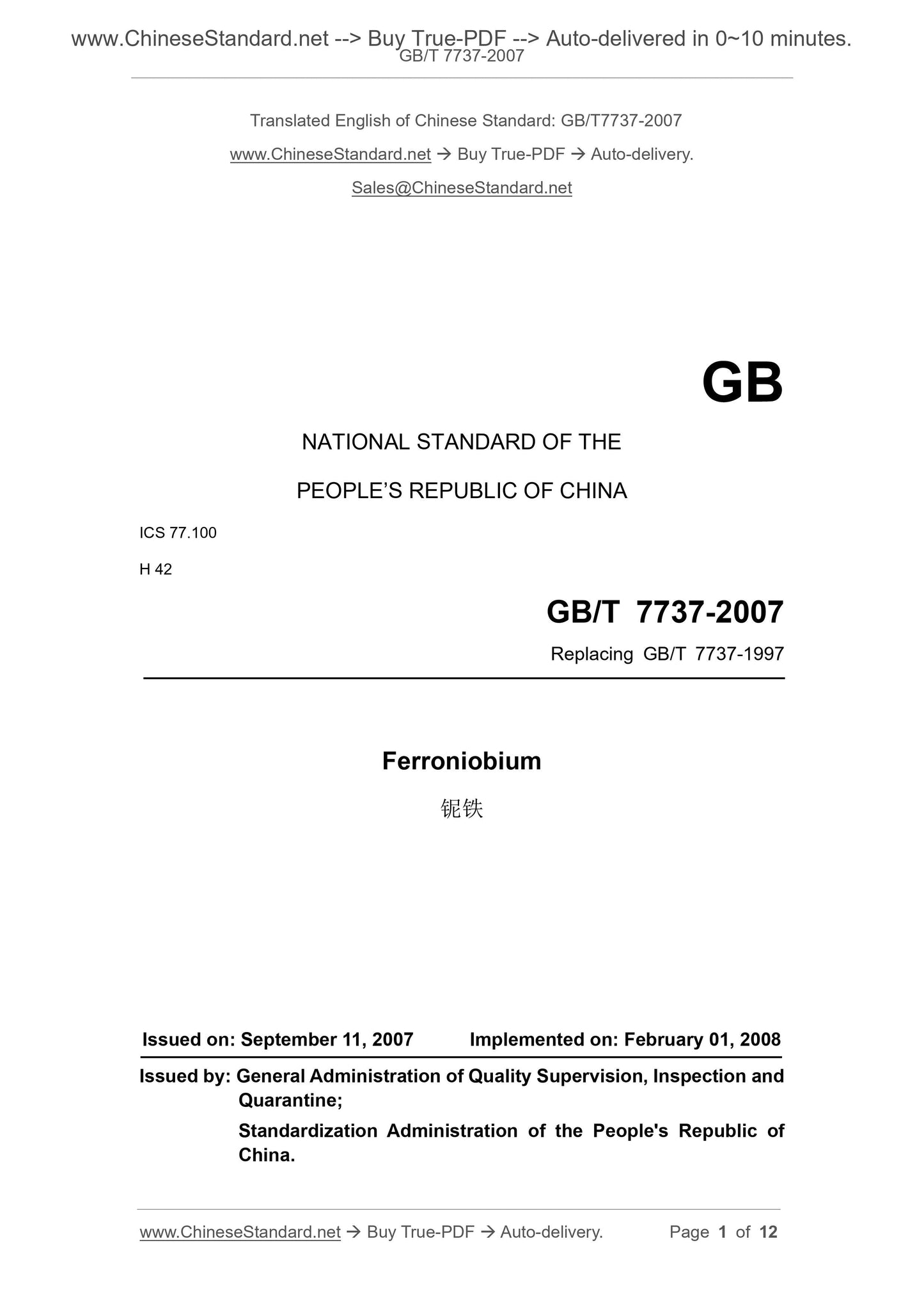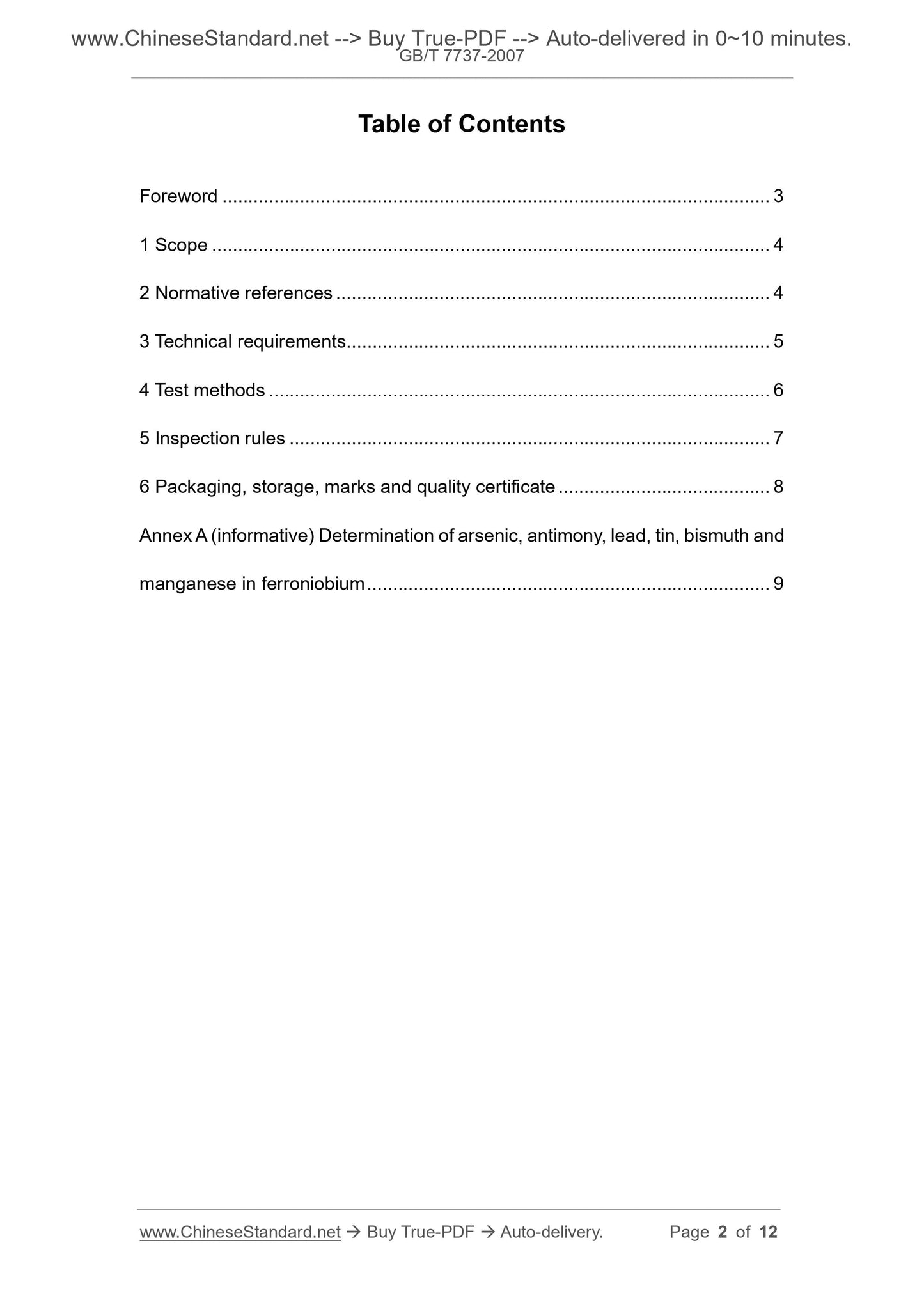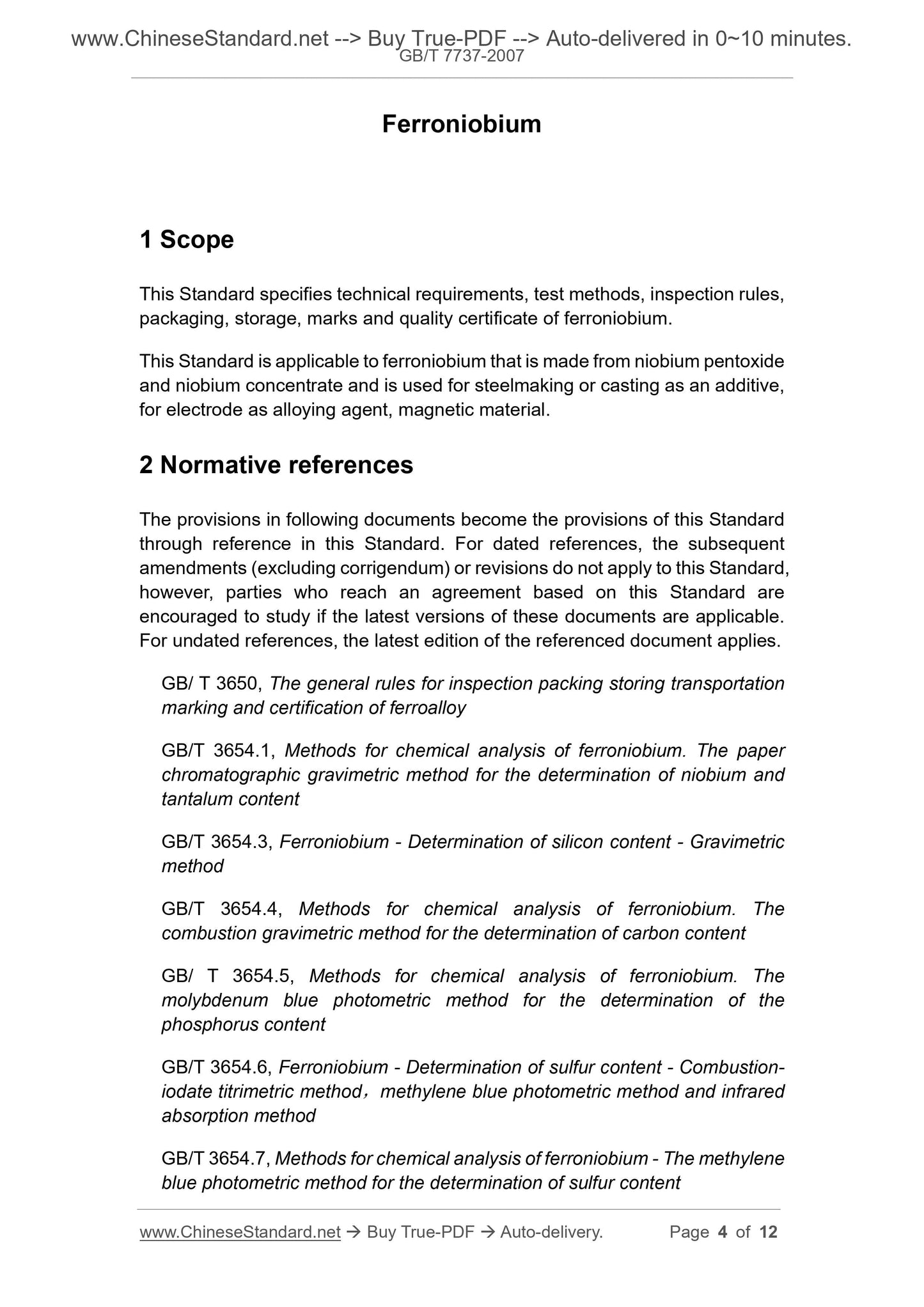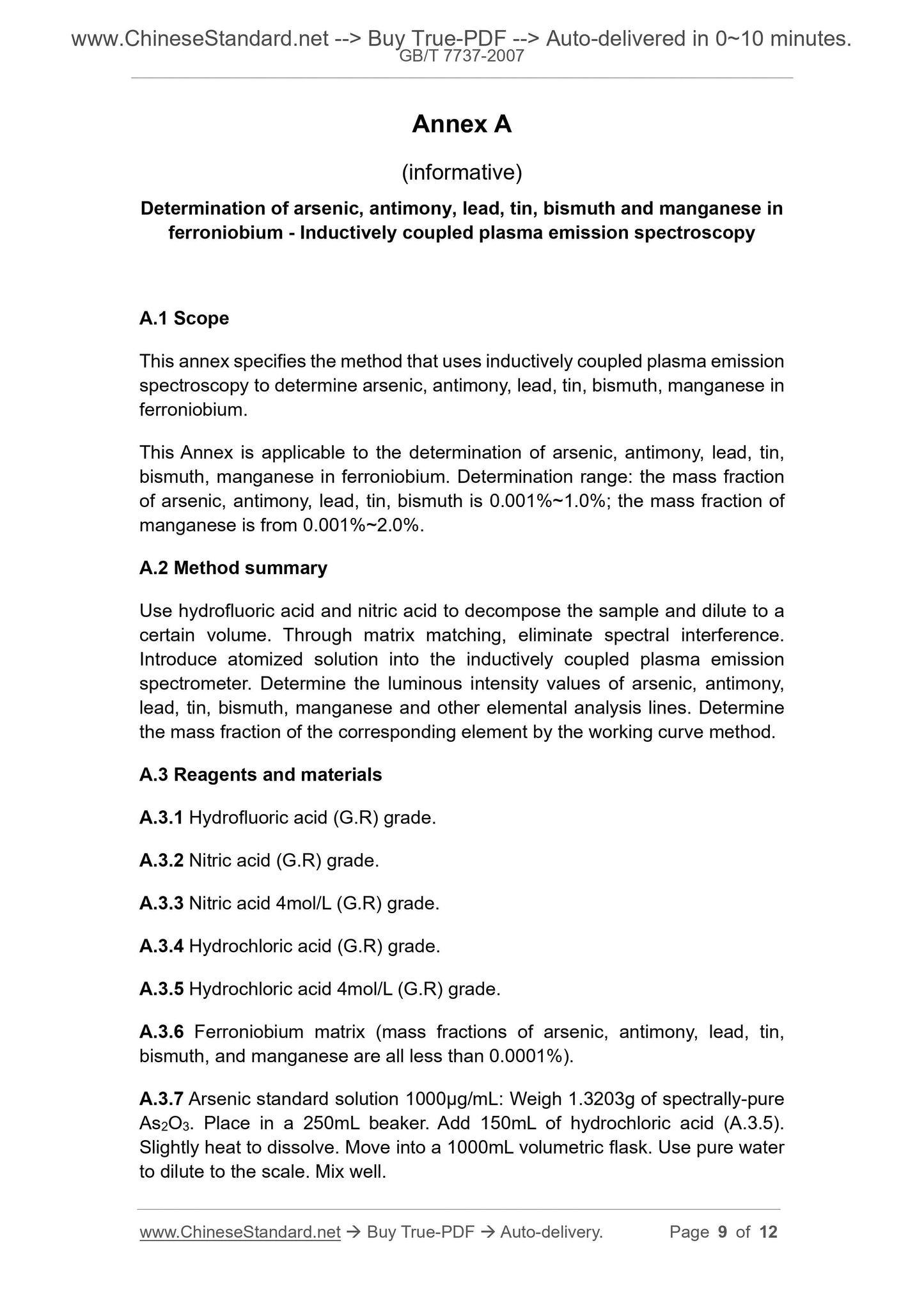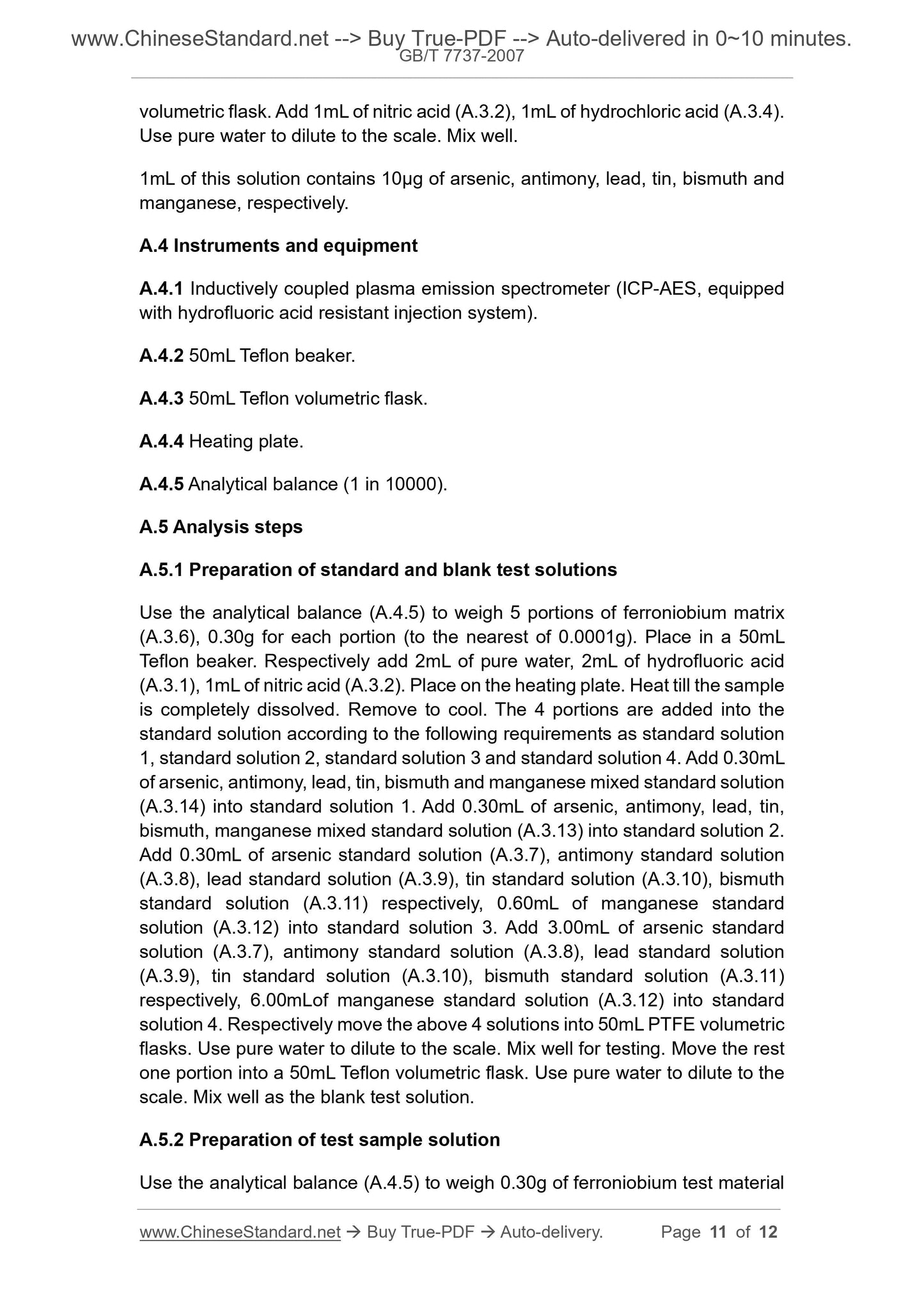1
/
of
5
www.ChineseStandard.us -- Field Test Asia Pte. Ltd.
GB/T 7737-2007 English PDF (GB/T7737-2007)
GB/T 7737-2007 English PDF (GB/T7737-2007)
Regular price
$130.00
Regular price
Sale price
$130.00
Unit price
/
per
Shipping calculated at checkout.
Couldn't load pickup availability
GB/T 7737-2007: Ferroniobium
Delivery: 9 seconds. Download (and Email) true-PDF + Invoice.Get Quotation: Click GB/T 7737-2007 (Self-service in 1-minute)
Newer / historical versions: GB/T 7737-2007
Preview True-PDF
Scope
This Standard specifies technical requirements, test methods, inspection rules,packaging, storage, marks and quality certificate of ferroniobium.
This Standard is applicable to ferroniobium that is made from niobium pentoxide
and niobium concentrate and is used for steelmaking or casting as an additive,
for electrode as alloying agent, magnetic material.
Basic Data
| Standard ID | GB/T 7737-2007 (GB/T7737-2007) |
| Description (Translated English) | Ferroniobium |
| Sector / Industry | National Standard (Recommended) |
| Classification of Chinese Standard | H42 |
| Classification of International Standard | 77.100 |
| Word Count Estimation | 9,994 |
| Date of Issue | 2007-09-11 |
| Date of Implementation | 2008-02-01 |
| Older Standard (superseded by this standard) | GB/T 7737-1997 |
| Adopted Standard | ASTM A550-2006, NEQ |
| Regulation (derived from) | China National Standard Approval Announcement2007 No.11 (Total No.111) |
| Issuing agency(ies) | General Administration of Quality Supervision, Inspection and Quarantine of the People's Republic of China, Standardization Administration of the People's Republic of China |
| Summary | This standard specifies the technical requirements of niobium iron, test methods, inspection rules, marking and quality certification, storage, packaging. This standard applies to niobium pentoxide and niobium concentrates for the production of raw materials for steel or cast as an additive, welding as an alloying agent, niobium ferromagnetic materials and other purposes. |
Share
